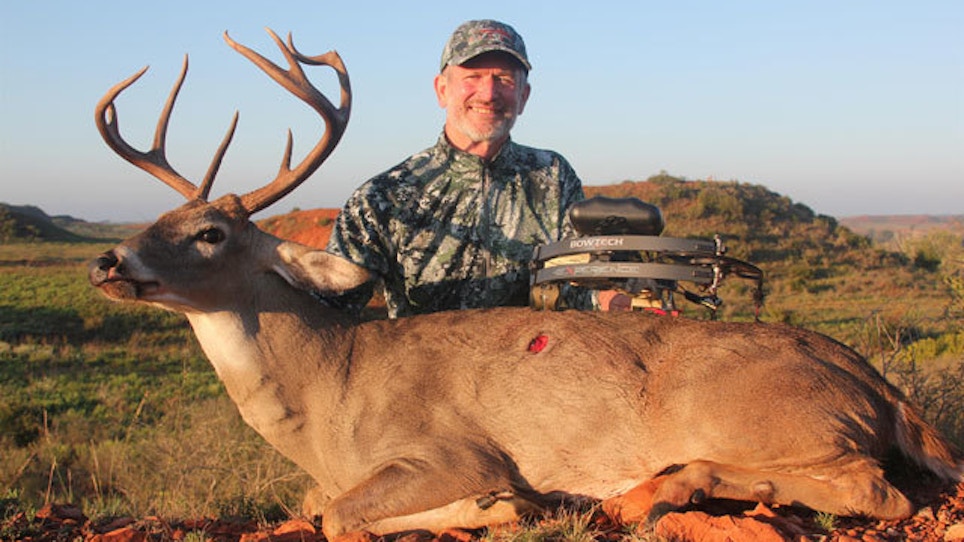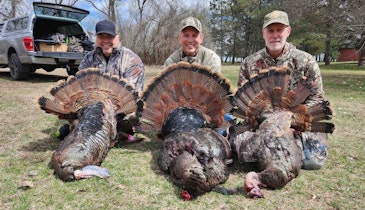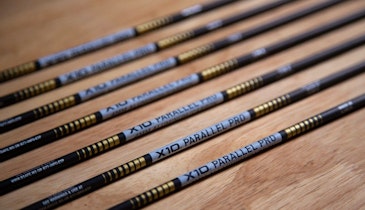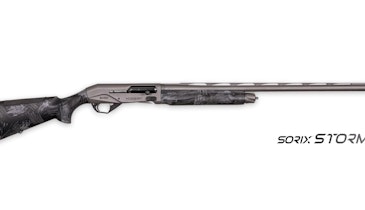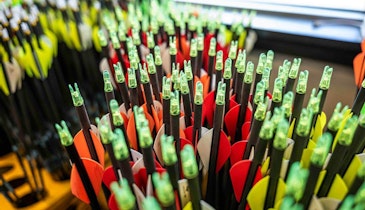“Knowledge is power.” — Frances Bacon, 1597.
Bacon may not have been a deer hunter, but his sagacity certainly applies to hunting the early season.
Such was the case in early October, 2013, when Scott and Joni Sanderford at Croton Creek Lodge near Cheyenne, Oklahoma, put me up a tree one hot, breezy afternoon. They had used trail cameras to pattern a group of bucks since midsummer, and now, with the wind right, sent me there. That afternoon, just before dark, two of the bucks came out of the bedding thicket along a row of cottonwoods, then crossed 41 yards in front of me. A 100-grain Rage took the largest through both lungs. Just like that, I had another fine early-season buck to my credit.
After three decades of whitetail hunting from August to New Year’s Day, I have come to believe there are a few rules that, when followed, will at least give you a fighting chance to kill a deer when the mercury soars.
Generally speaking, I only hunt afternoons early on for one simple reason: In really hot weather, the chances of catching a mature buck out of his bed when the rooster crows are so small they are not worth the time or the chance that you will spook deer walking to your stand in the dark. Most all deer are bedded down when the sun kisses the sky, resting and ruminating after a long night of foraging. Mornings are reserved for following my usual routine at home or work.
In the afternoons, there are two killer stand locations to concentrate on. The first and most commonly hunted is at or near the edge of a crop field or other preferred food source. Deer generally leave their beds late in the afternoon and head for supper, arriving shortly before sundown. You can almost bet the farm that the first deer to arrive will be does and yearlings followed by 1½-year-old bucks. If mature bucks are going to show themselves, they generally do so as it is pushing the legal shooting-hours limit.
For that reason, picking exactly the right stand site is critical. You won’t have a lot of time once a mature buck appears, so you need to have him appear as close to shooting range as possible. This is where your scouting comes into play. I like using infrared trail cameras set on trails leading to the field to capture images of deer back off the field as I try to figure out which trails they like. Rather than setting the camera on a random tree and hoping it is the right one, I will clear spots on several good-looking trails and then look for big tracks that indicate mature deer are using it.
The other great stand spot in hot weather is around a water source. This can be everything from a small creek or pond to a stock tank or large lake. Many times in the afternoon deer will get up from their beds and stretch a little before slowly browsing their way to the agriculture. Often they stop at a water source for a quick drink.
Regardless of which spot I choose to hunt, there are some constants about stand site selection. Naturally, wind direction is critical. Just as important to me is shade. Not only will you shine like a beacon if you are sitting in a treestand lit by the sun, but also, you’ll be miserable. Get tucked into some leafy shade where the breeze can cool you and you’re good to go. I also set tree stands relatively high this time of year to help dissipate my scent stream, as well as use gallons of a quality scent-eliminating spray.
You’ll also have to deal with irritating insects. Bug dope is great, but it smells. That’s why a ThermaCell can be the ticket. They’re relatively odorless, they're easy to use, they can clip onto your clothing or stand, and they work great.
There’s no doubt that early-season hunting is not generally as productive as hunting in cooler weather, when the mast crop begins falling and the rut kicks in. The early season can be a way to locate stand sites for the rut and will give you a good feel for what is going on in the woods you’ll be focusing on later in the year. It is also the best time of year to harvest any antlerless deer you might want to take off the property. They’re butterball fat and prime for the table now, so why wait until the rut, when you can use does as live bait for mature bucks and shooting does can muck up a great rut stand?
One other note. Hunt with as little impact as possible during the early season. The last thing you want to do is let the older-age-class bucks know that something is amiss. I never hunt my best rut stands during the early season for this very reason. Be a stealth bomber, though, and you can have lots of fun — and, if things shake out like they sometimes do, the results just might surprise you.
